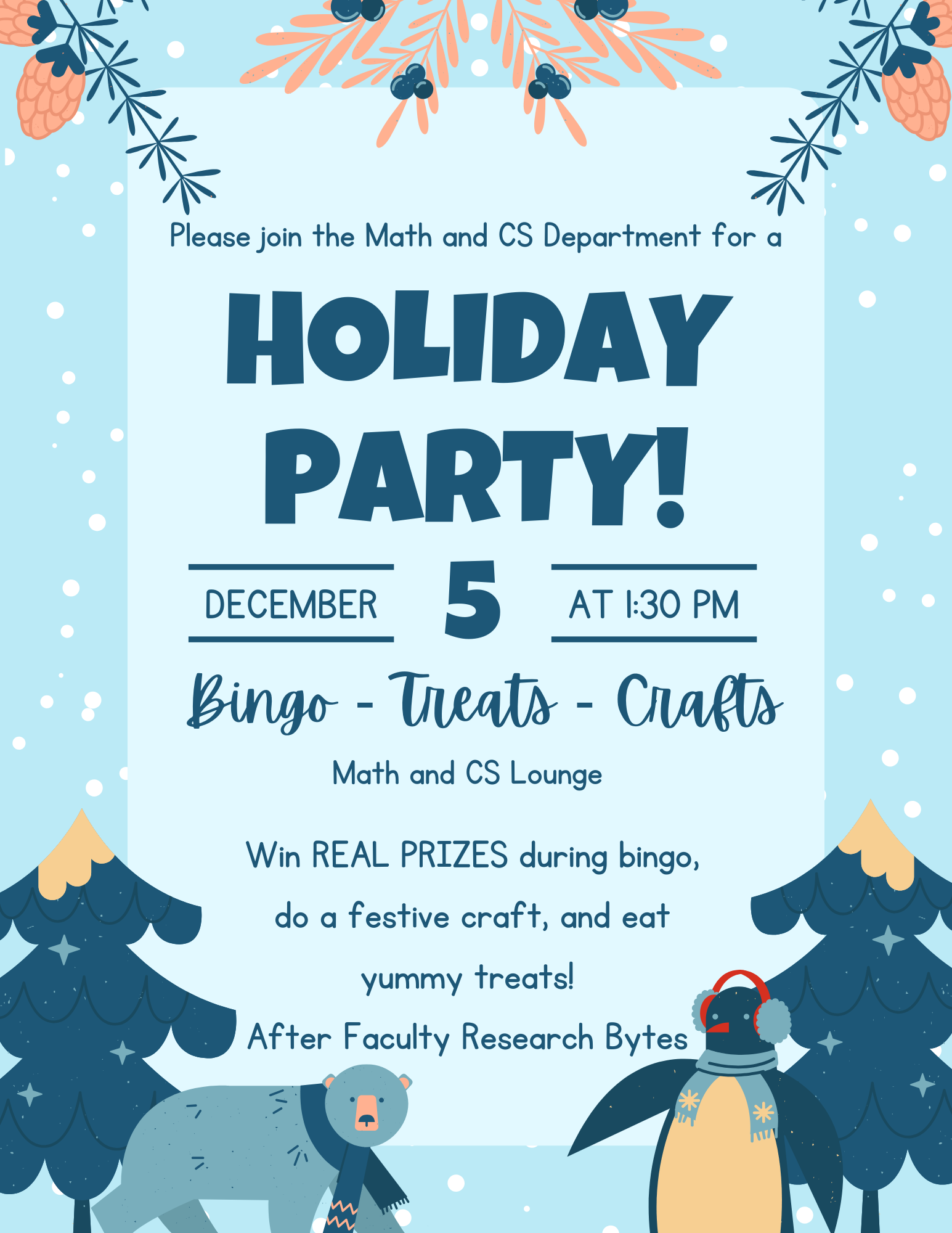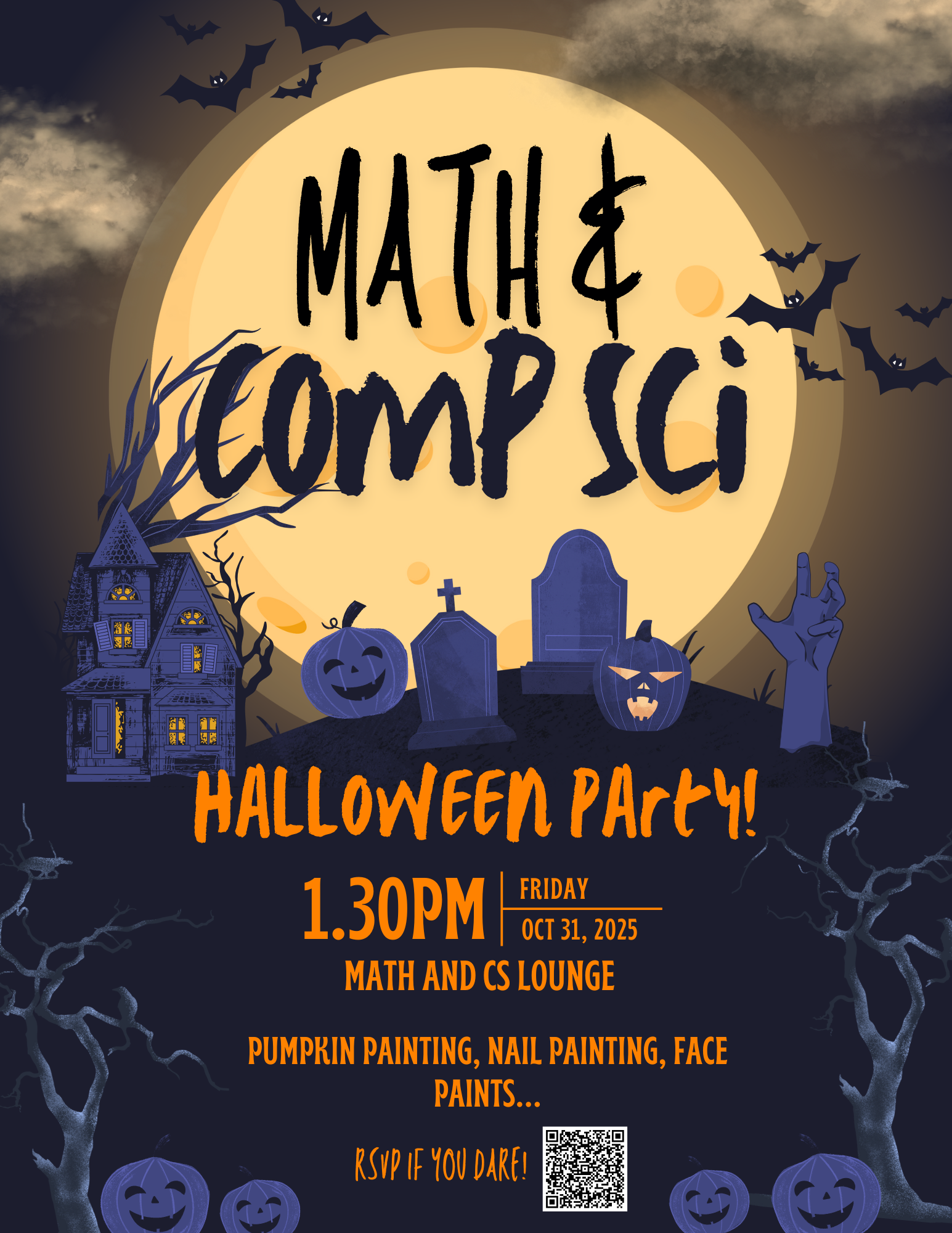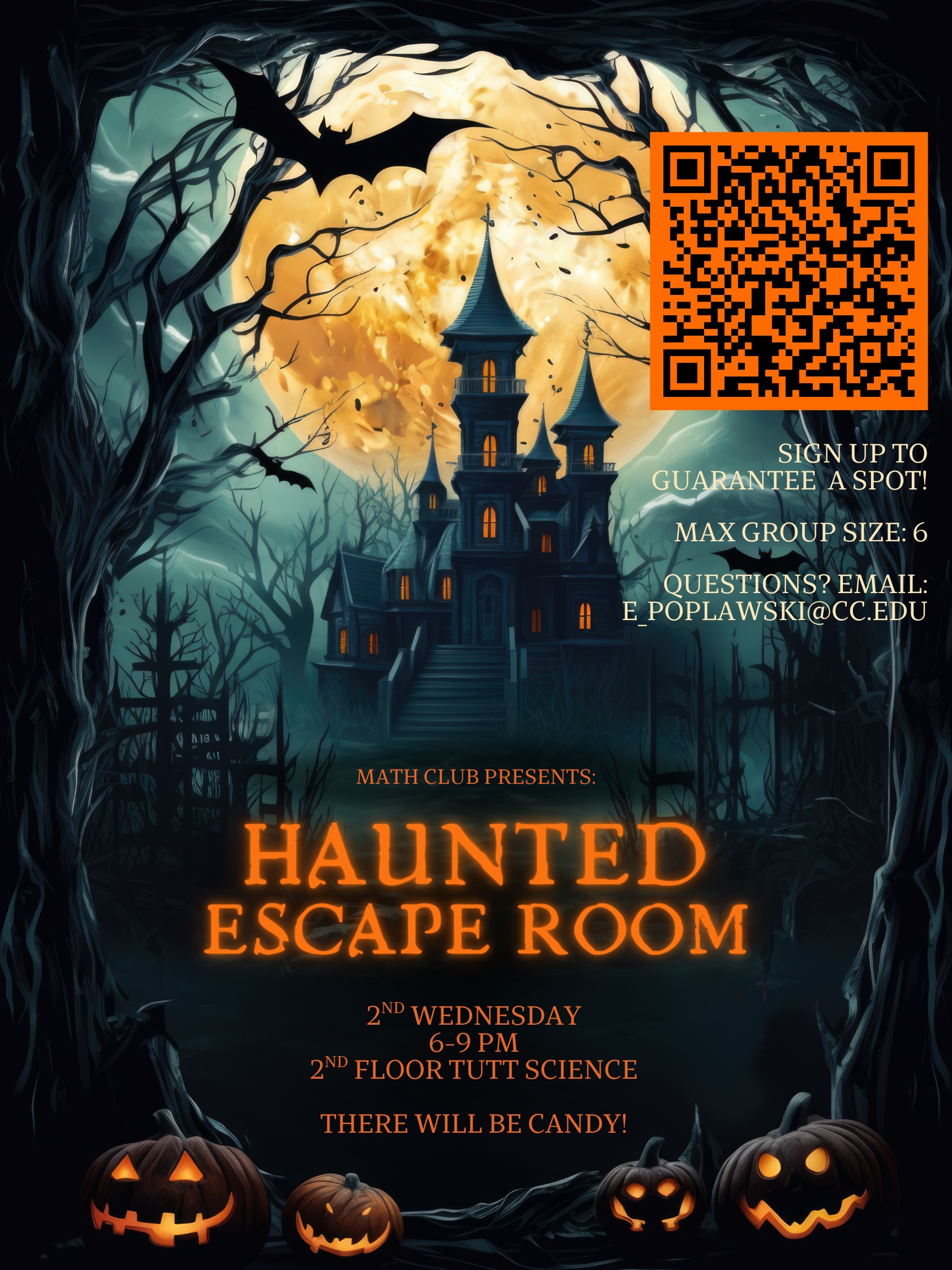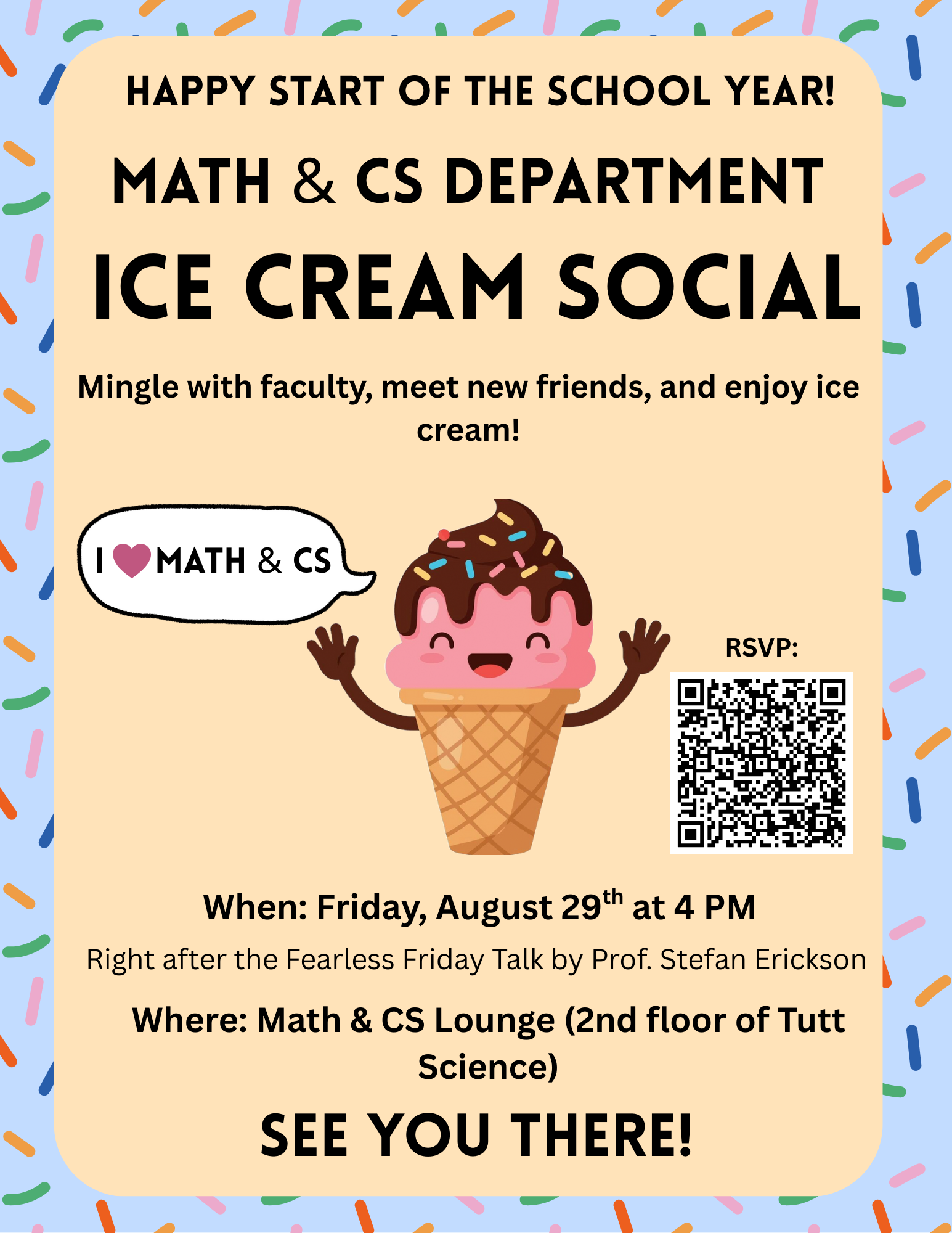News & Events
2025 - 2026
12/6-7/25 Hackathon
12/5/25 Holiday Party
10/31/25 Halloween Party
10/29/25 Escape Room
10/3/25 Summer Research Poster Fair
1:30 - 3:00 pm, following the Homecoming Fearless Friday
1st and 2nd Floor Atriums, Tutt Science
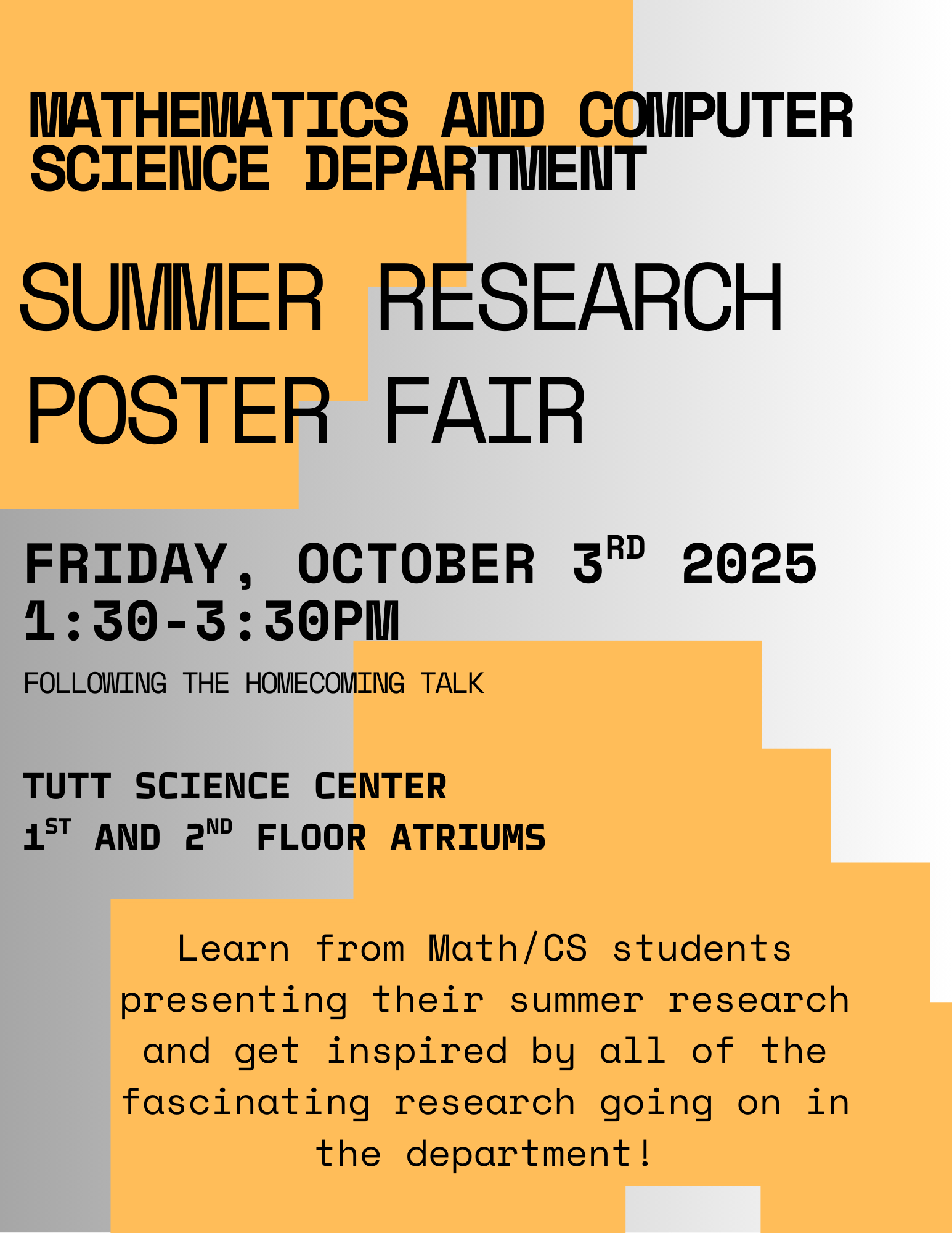
8/29/25 Ice Cream Social
Report an issue -
Last updated: 12/04/2025



